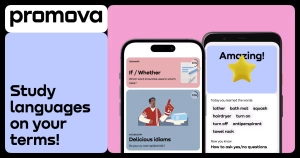The New Frontier of Customer Experience
In today’s hyper-competitive digital landscape, understanding your customers isn’t just an advantage—it’s a necessity. Traditional customer journey mapping, while insightful, often falls short in capturing the dynamic, non-linear paths modern consumers take. Enter AI-powered customer journey mapping: a transformative approach that leverages artificial intelligence to deliver real-time, personalized insights, helping marketers boost engagement, drive conversions, and dramatically increase marketing ROI.
This guide explores how AI is reshaping customer journey mapping, highlighting the latest trends, technologies, and strategies you can use to stay ahead of the curve.
What is AI-Powered Customer Journey Mapping?
AI-powered customer journey mapping is the process of using artificial intelligence and machine learning to visualize and analyze the steps customers take when interacting with a brand across multiple touchpoints. Unlike static, linear maps, AI-driven models are dynamic, predictive, and adaptive to real-time behavior.
Key Features:
- Real-time data integration
- Behavioral analytics and prediction
- Personalization at scale
- Multi-channel insights (web, mobile, email, social)
- Automated segmentation and targeting
Why Traditional Mapping Falls Short
Traditional customer journey mapping relies heavily on historical data, anecdotal assumptions, and manual updates. This makes it:
- Static: Unable to adapt to real-time changes.
- Limited: Focused on a few predefined personas.
- Time-consuming: Requires extensive manual effort.
AI transforms this by automating data analysis and providing insights that are both predictive and prescriptive.
The Latest Trends in AI-Powered Customer Journey Mapping
1. Hyper-Personalization Through Predictive Analytics
AI can analyze past behaviors and predict future actions, enabling hyper-personalized marketing strategies that resonate deeply with individual customers.
2. Omnichannel Integration
AI unifies data from all customer touchpoints, creating a 360-degree view that supports seamless cross-channel experiences.
3. Real-Time Journey Orchestration
AI tools can trigger personalized content, messages, and offers based on real-time customer actions.
4. Sentiment Analysis and Voice of Customer (VoC)
Natural language processing (NLP) enables brands to understand customer emotions and feedback from surveys, reviews, and social media.
5. Conversational AI for Seamless Engagement
Chatbots and virtual assistants are increasingly being used to guide customers along their journey, collecting data and providing instant support.
How AI Enhances ROI in Marketing
Increased Conversion Rates
Personalized experiences driven by AI improve customer satisfaction and boost conversions.
Reduced Churn
Predictive models identify at-risk customers early, enabling proactive engagement.
Optimized Campaign Performance
AI identifies high-performing content and segments, allowing marketers to allocate resources more effectively.
Cost Efficiency
Automation and smarter targeting reduce the cost per acquisition (CPA).
| Metric | Traditional Mapping | AI-Powered Mapping |
|---|---|---|
| ROI Growth | Moderate | High |
| Personalization | Limited | Advanced |
| Real-Time Insights | No | Yes |
| Scalability | Low | High |
Implementation Guide: Steps to Get Started
1. Define Clear Objectives
Establish KPIs and success metrics tailored to your business goals.
2. Select the Right AI Tools
Look for platforms with:
- Machine learning capabilities
- Real-time analytics dashboards
- CRM and marketing automation integration
3. Integrate Your Data Sources
Unify data across CRM, web analytics, social platforms, and email marketing.
4. Build and Train AI Models
Utilize historical data to train models, then refine with real-time inputs.
5. Monitor, Optimize, and Iterate
Continuously track performance and adjust strategies based on AI insights.
Expert Insights and Case Studies
Adobe
Adobe’s AI-powered platform, Adobe Experience Cloud, helps brands deliver personalized experiences, reporting up to 25% lift in conversion rates after implementing AI journey mapping.
McKinsey & Company
McKinsey reports that companies leveraging AI for customer experience achieve 20-30% increases in customer satisfaction and 10-15% improvements in sales conversion rates.
Salesforce
Salesforce’s Einstein AI personalizes email content, improving open rates by 26% and click-through rates by 17%.
Actionable Strategies for Success
- Start Small: Test AI in one part of your funnel before full-scale implementation.
- Focus on High-Value Journeys: Prioritize journeys with the greatest impact on ROI.
- Invest in Talent: Ensure you have data scientists or partners who can interpret AI insights.
- Stay Compliant: Always align with GDPR, CCPA, and other data privacy laws.
Embrace the Future of Marketing
AI-powered customer journey mapping is not just a trend—it’s the future of customer-centric marketing. By leveraging AI to understand and predict customer behavior, businesses can create experiences that are not only personalized but also timely, relevant, and impactful.
Start small, stay focused, and scale smartly. The return on investment isn’t just in dollars, but in loyalty, engagement, and long-term growth.












